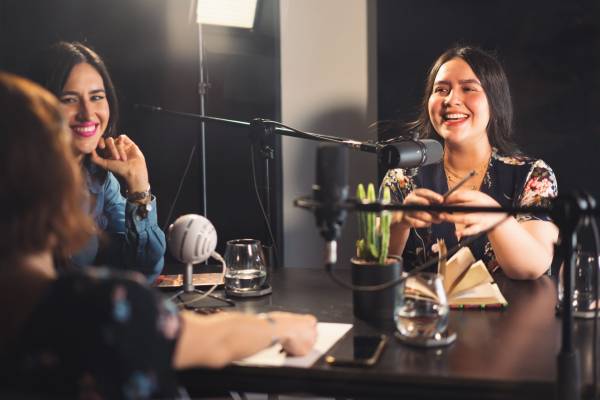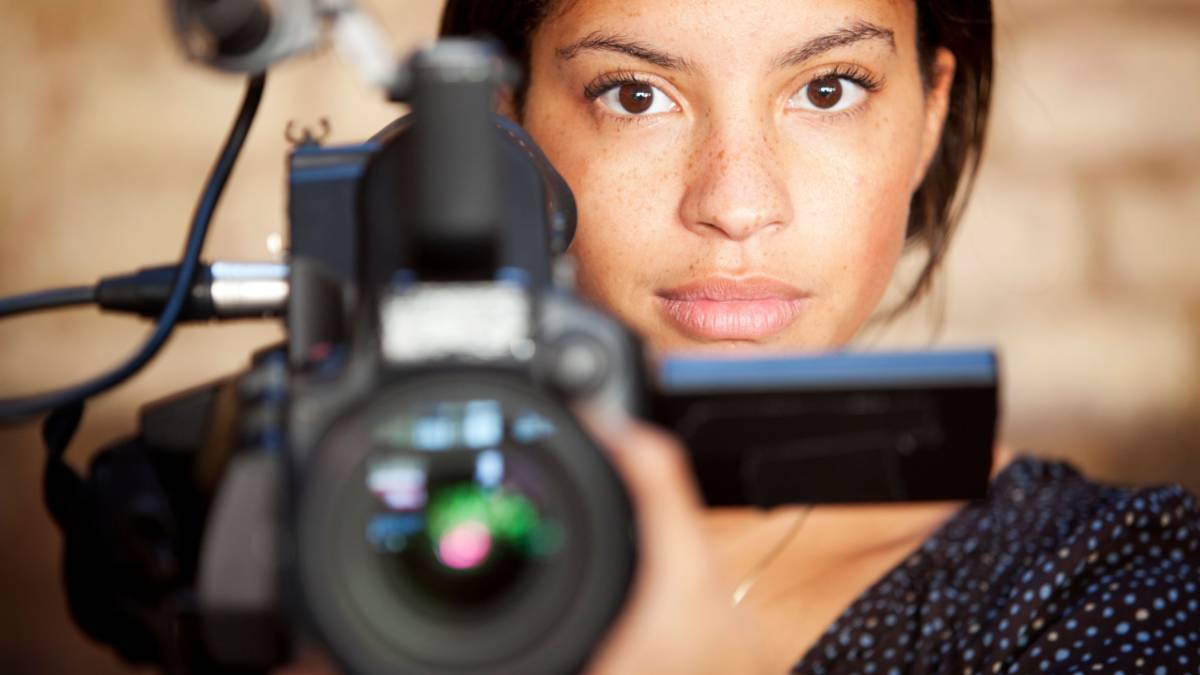We present the results of studies of different regulatory bodies in Latin America on the presence of women in radio and television.
Richard Santa
On the occasion of the commemoration of Women's Day in 2023 on March 8, several regulatory bodies in Latin America presented studies on the representation of women in different areas of radio and television.
These studies analyzed aspects such as the participation of women in sports coverage, audiovisual content that denigrates women and the role of women in media consumption. Below, we present the main results of studies carried out in Chile, Mexico and Argentina.
Mexico
The Federal Institute of Telecommunications, IFT , presented the Special Report on audiences and audiovisual content for girls, adolescents and women, the results of the Monitoring of news from a gender perspective, as well as the Special Report on digital consumption by women in urban and rural areas.
The purpose of the Special Report on Audiences and Audiovisual Content is to provide statistical information detailing the consumption habit of radio, broadcast, restricted and internet audiovisual content by girls, adolescents and women, in which the consumption variables are analyzed in a disaggregated manner based on the different age groups.
Among the most important findings are:
Television consumption
During 2022, girls, adolescents and women represented 53.89% of the audience and television consumption in Mexico. The time with the highest levels of such consumption was from 7:00 p.m. onwards.
They spent, on average, 5 hours and 42 minutes a day consuming television content; In the case of women over 60 years, it was 7 hours, while in the segment of 13 to 18 years it was 4 hours and 51 minutes.
As for audience participation by signal type, open television is the most watched with 48.59 percent. The 60-year-old women's group accounts for the largest percentage of the audience, at 64.69 percent.
Radio consumption
As for radio consumption, in the cities of Mexico, Guadalajara and Monterrey, this medium reached a monthly average of 57.38% of women aged 13 and older, with an average listening time of 2 hours and 21 minutes a day.
Of the cities mentioned, women aged 25 to 54 concentrated 64.98% of the total consumption of this target audience; while adolescents aged 13 to 17 recorded the lowest radio listening.
By type of programming, in the aforementioned cities, the audience was mainly concentrated in stations that broadcast grupera and tropical music, pop in Spanish and English, spoken content, ballads in Spanish and pop in English, which represent 65.08% of the total listening.
OTT video consumption
Women point out that the reasons they consider important to subscribe to services of audiovisual content platforms over the Internet, known as Over The Top (OTT for its acronym in English), are related to: the type of content that can be found on the platforms to see something specific (45.6%), the size of the platform's catalog (25.1%) and the availability of exclusive or original content offer from the provider (22%), among others.
When subscribing to OTT platforms, women mainly report that, in themselves or in their homes, they are interested in the "premiere of movies" ("latest films"), as well as "old movies" and "children's content".
Sports consumption on pay TV and/or video
Regarding the consumption of pay TV and / or online video, 45% of women declared to be spectators of sports content.
Argentina
The Observatory on Discrimination in Radio and TV, which depends on the National Communications Agency, ENACOM, prepared a report entitled "Women and sport", in which it analyzed the presence and development of gender roles in sports content channels.
Television continues to be one of the main sources of information for a large part of the population, in the country and in the world. Therefore, it is interesting to visualize who and what stereotypes of women appear in the news, as well as to know the way in which people are presented and newsworthy events. Equally important is who is left out or what is not covered. Culturally based gender inequality and discrimination against women is reinforced in the media.
The content analysis carried out by the Observatory is a quantitative and systematic method of social research used to study the manifest content of the communication. The corpus addressed in this study includes the contents broadcast in the programs of sports channels in the period from November 20 to December 18, 2022.
Some of the main results of the report indicate that one of the aspects in which there is greater inequality in sports programs is in the diversity of genders present in broadcasts, compared to other television formats (such as news or magazines, for example). Sports cycles show a comparative presence of cis women and cis men of 10/90 (in percentage terms), while, in other cases, such as in the news, it is 40/60.
 Likewise, in terms of the roles assumed in the broadcasts, a marked disparity between the two genders is revealed, since cis women only have a presence in driving practices and as panelists. In the realization of mobile phones abroad – where there are both interviews with protagonists of sporting events and fans of the different teams and analysis of the formations and game strategies – the role is exercised exclusively by cis males. Something similar happens in the exercise of tasks such as presenters, specialists or analysts.
Likewise, in terms of the roles assumed in the broadcasts, a marked disparity between the two genders is revealed, since cis women only have a presence in driving practices and as panelists. In the realization of mobile phones abroad – where there are both interviews with protagonists of sporting events and fans of the different teams and analysis of the formations and game strategies – the role is exercised exclusively by cis males. Something similar happens in the exercise of tasks such as presenters, specialists or analysts.
The study mentions two genders (women and cis men) since, as with most television formats, sexual and gender diversities are invisible in the formation of work teams and as subjects of discourses.
On the other hand, although football is the sport that has the highest prevalence in the themes of the different sports programs and their respective genders, women's football continues to be a topic absent from sports television agendas. In addition, of the 45 programs that make up the corpus of analysis, only one has as its narrative axis the performance of women athletes in disciplines such as swimming and rugby.
The analysis also considered the survey of advertisements for products and services, and concluded that 11% of the 479 records surveyed correspond to commercials of alcoholic beverages. In this sense, it is worth reflecting on the relevance or not of advertising alcoholic beverages in media contexts that aim to make sports practices visible, since an association could be incurred between the consumption of this type of products and physical, intellectual performance, etc.
Based on this report, the Observatory of Discrimination in Radio and TV considers it important to establish a frequency that periodically allows comparing progress, changes and challenges in content and its development with the intention of reducing the gender gap. The goal is to extend monitoring to radio programs, and even reach communication through social networks. From this perspective, complex but undoubtedly more representative of the audiovisual world and the current role of Information and Communication Technologies (ICT), it would be possible to achieve significant improvements in the access and representation of women in the media.
Chile
A recent survey in the framework of the International Day of Working Women, carried out by the Department of Studies of the CNTV, reveals that mornings, humorous routines and advertising are the television spaces where it is more frequent to find denigratory content towards women.
The opinion survey, applied for the third consecutive year to people who have made complaints to the CNTV, seeks to investigate the perceptions of one of the audiences most interested in the television phenomenon. "This work measures, on the one hand, the time that television gives to different social groups, and on the other the treatment it gives them, whether positive or negative," explained María Dolores Souza, director of the Department of Studies.
According to the results of the survey, in which 2,097 women and men participated, the majority of respondents consider that television shows more men than women when representing sexual diversities, people with disabilities, indigenous peoples, migrants and people deprived of liberty.
More than a third of the people consulted say that television tends to harm women in poverty, migrants, prisoners, indigenous people, sexual diversities and adolescents.
The study also shows that TV would be reflecting recent cultural changes: one in three people interviewed considers that the treatment of sexual diversities has improved, also in other groups the percentage of those who believe that the treatment improved is higher, compared to those who consider the opposite. However, in the case of migrant women, more people feel that their TV treatment has worsened.
The most equitable representation, in terms of the time of appearance according to the people consulted, would be only between girls and boys.
Most offensive media
60.5% of the people surveyed say that social networks are the medium in which it is most frequent to find offensive content towards women. It is followed by television, with a much lower percentage of mentions, 25.6%.


























Leave your comment